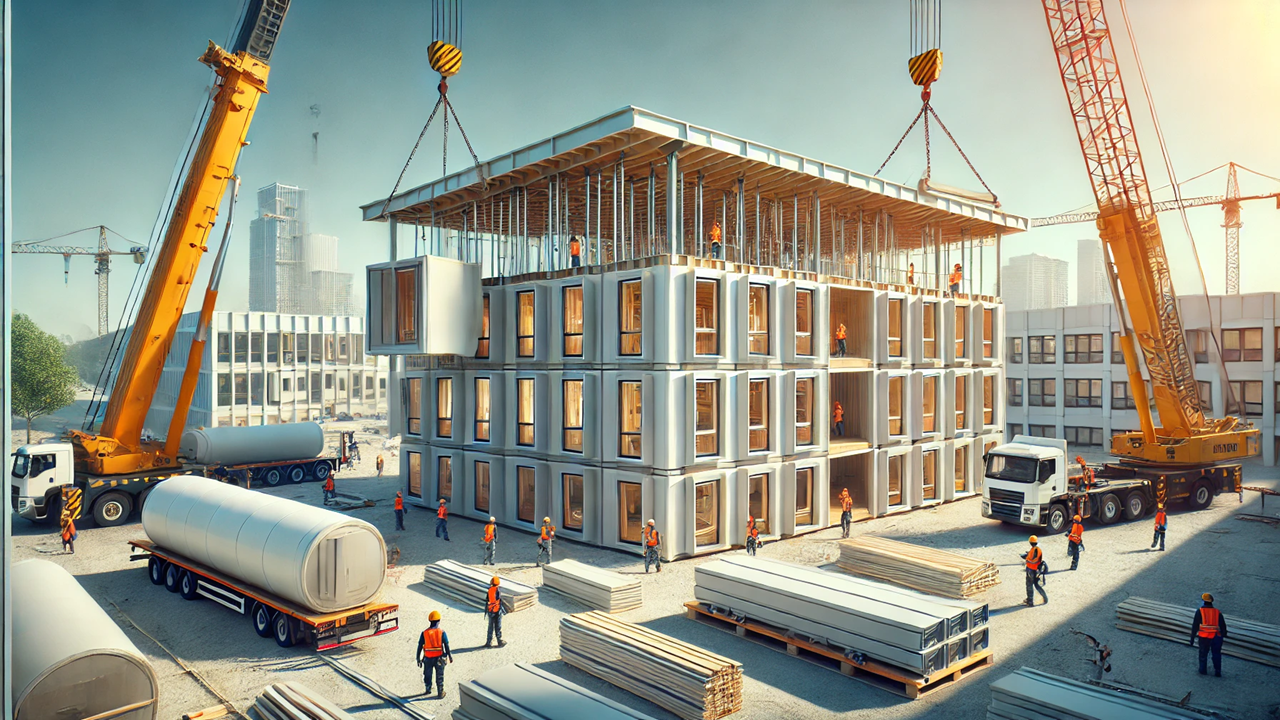Building the Future of Education: How Off-Site Construction is Revolutionizing School Infrastructure
The World Bank's report on off-site construction in school building projects highlights the method's potential to revolutionize educational infrastructure. Off-site construction offers speed, efficiency, and sustainability, making it an ideal solution for rapidly addressing the global shortage of schools. However, challenges such as design standardization, transportation logistics, and public perception must be addressed to realize its full potential.

In a world where educational infrastructure is critical, particularly in developing nations, innovative solutions are becoming essential. The traditional methods of building schools are proving too slow to keep up with the increasing demand, and as a result, many countries are turning to modern methods of construction (MMC), specifically off-site construction. A recent report by the World Bank titled "Educational Infrastructure and Modern Methods of Construction: Analysis of Off-Site Technology for the Construction of School Buildings" explores the potential of off-site construction to reshape how schools are built. This article delves into the key findings of that report and what they mean for the future of education.
The Power of Prefabrication
Off-site construction, often prefabrication, involves manufacturing building components in a factory setting and then transporting them to the construction site for assembly. This method contrasts sharply with traditional on-site construction, where everything is built from the ground up at the location. The advantages of off-site construction are clear: it's faster, more efficient, and often more cost-effective.
According to the World Bank report, one of off-site construction's most significant benefits is scalability. Schools can be built en masse, with identical classrooms and facilities, drastically reducing the time it takes to provide learning environments for students. This speed is especially crucial in regions where educational infrastructure is lacking, and the need for schools is urgent. Furthermore, the factory setting allows for better quality control, ensuring that every component meets high standards before being transported and assembled on-site.
Challenges and Misconceptions
While the benefits of off-site construction are numerous, the World Bank report does not shy away from addressing the challenges that come with it. One of the primary hurdles is the need for standardized designs. Off-site construction thrives on repetition and uniformity, which can sometimes stifle creativity and adaptability in design. However, the report emphasizes that design-led prefabrication can still achieve aesthetically pleasing and functional results within these constraints.
Another challenge is the transportation and handling of prefabricated components. Depending on the location, moving large, heavy components from the factory to the site can be logistically complex and costly. This issue is particularly pronounced in remote or underdeveloped regions where transportation infrastructure may be lacking.
Public perception is another barrier to widespread adoption. Prefabrication often carries the stigma of being associated with temporary or low-quality structures. Yet, the World Bank report points out that modern off-site construction techniques produce permanent buildings that meet or exceed the standards of traditional construction. Changing this perception will be key to broader acceptance of off-site methods.
A Sustainable Solution
Off-site construction isn't just about speed and efficiency—it's also a more sustainable approach to building. The controlled environment of a factory leads to less material waste, fewer emissions, and a more streamlined use of resources. The report highlights how this method can contribute to sustainability goals, particularly in reducing the environmental impact of large-scale construction projects.
In addition, the potential for cost savings is significant. While the initial costs of setting up a factory and producing prefabricated components may be higher, the overall project costs often decrease due to the reduced time and waste associated with the construction process. This makes off-site construction an attractive option for governments and organizations looking to build educational facilities on a large scale while adhering to budget constraints.
The Future of School Construction
The World Bank report concludes that off-site construction, when carefully planned and implemented, has the potential to make a significant impact on the global educational infrastructure crisis. It offers a viable solution to quickly and efficiently build the schools needed to provide quality education to millions of children worldwide.
However, the successful implementation of off-site construction requires more than just the technology—it demands a concerted effort to develop the necessary supply chains, regulatory frameworks, and workforce skills. With the right support and investment, off-site construction could very well be the future of school buildings, offering a path to faster, more sustainable, and higher-quality educational environments.
- FIRST PUBLISHED IN:
- Devdiscourse










